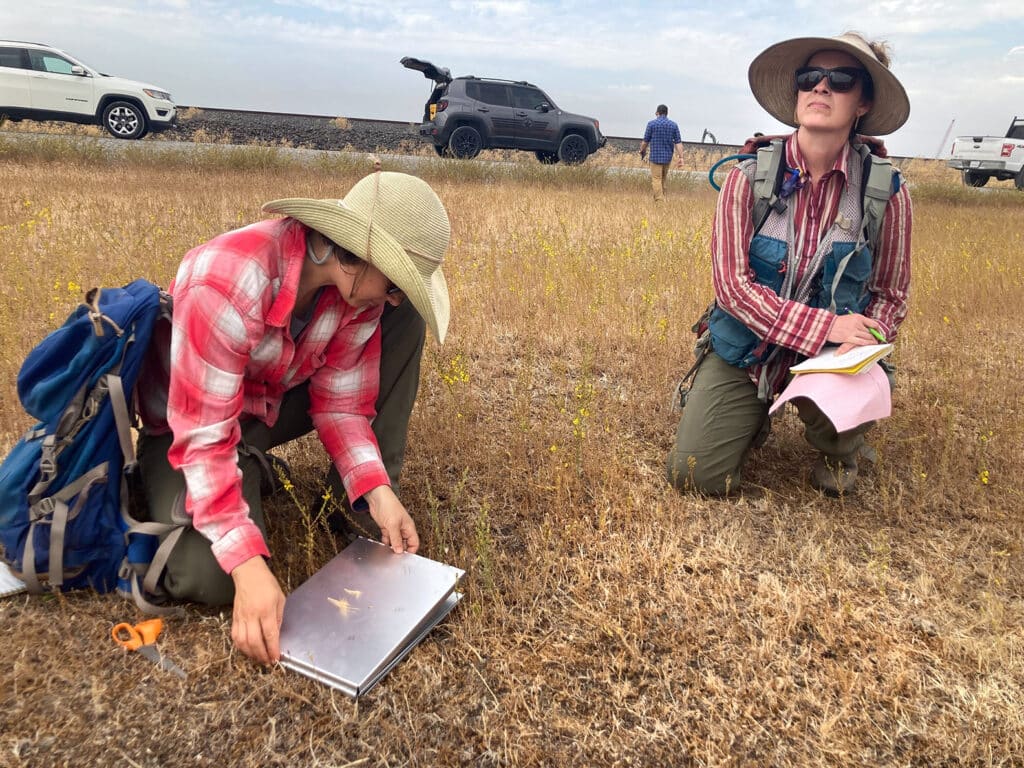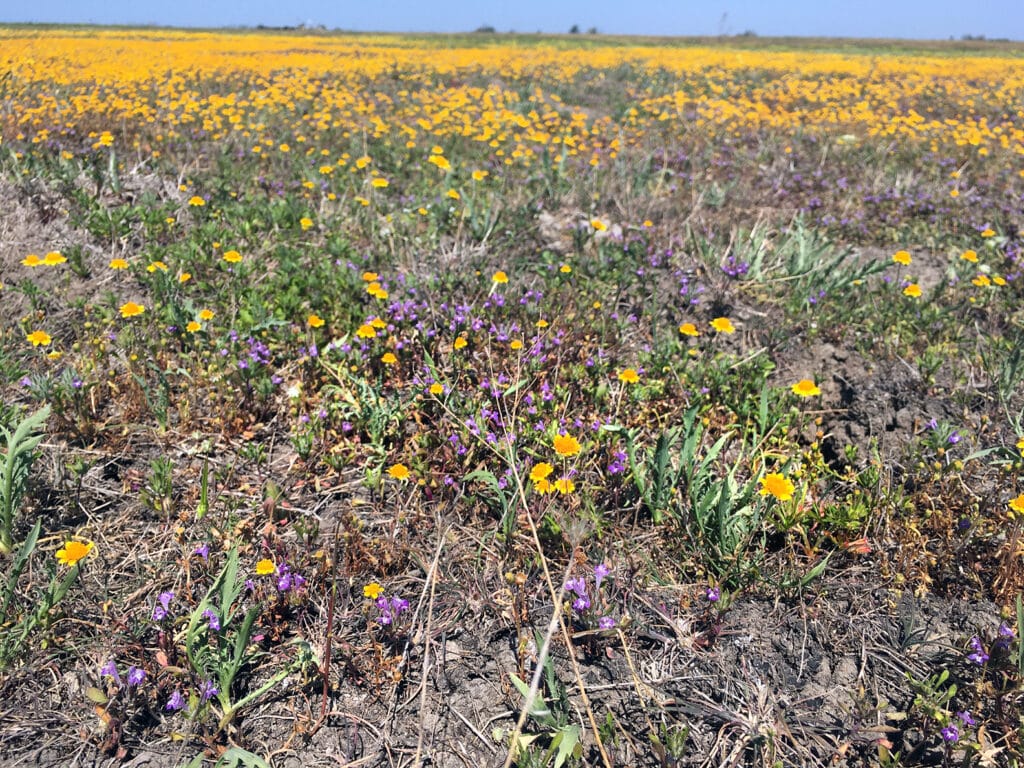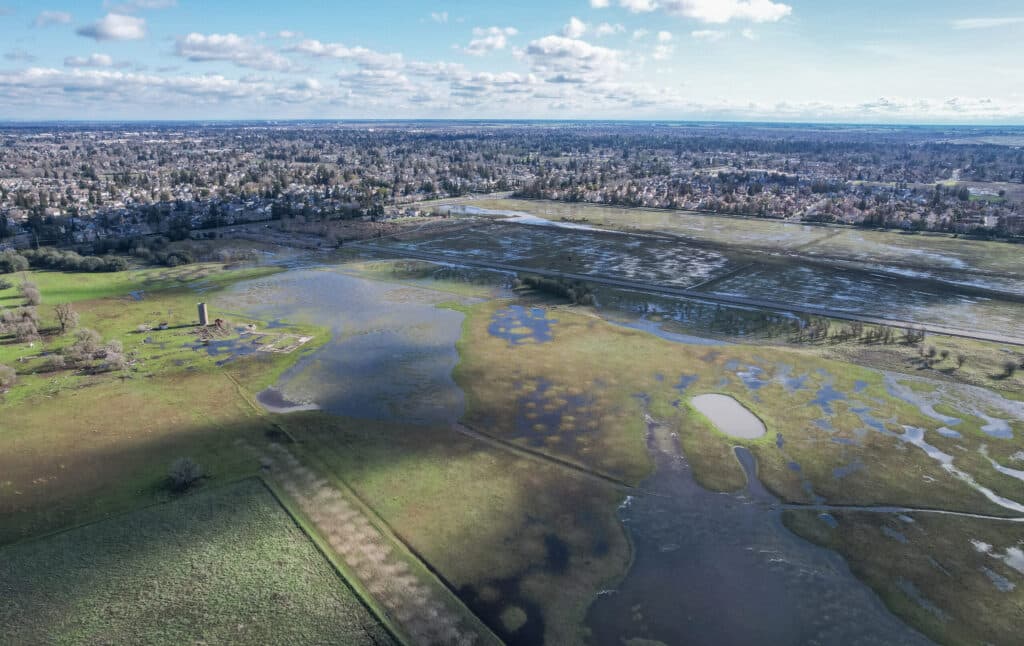Innovative Recycled Water Program Gets Green Light in California
August 7, 2023
In California’s southern Sacramento County, near the lower reaches of the Cosumnes River, a drop in the groundwater table of greater than 30 feet has jeopardized groundwater-dependent ecosystems and agricultural communities—from irrigation wells to wetlands and forests to migrating fish and birds. A new program will provide a safe and reliable supply of water to reduce demands on the groundwater supply, boost sustainable agriculture, strengthen local habitats, and offer near- and long-term benefits to the Sacramento-San Joaquin Delta.
The program, called Harvest Water, will deliver up to 16 billion gallons per year of cleaned, recycled water from a wastewater treatment plant near Elk Grove to farmers about 10 miles away. The farmers will apply the recycled water to their fields, thereby reducing the amount of groundwater they pump for irrigation.
The Sacramento Regional County Sanitation District (Regional San) is leading Harvest Water, with support from its implementation team, which includes The Freshwater Trust (TFT). It is one of the largest recycled water programs in California.
Harvest Water is funded in part by a voter-approved bond, the Proposition 1 Water Storage Investment Program (WSIP) grant administered by the California Water Commission (CWC). In 2018 the CWC approved $280 million in conditional funds and in June 2023 it fully awarded $292 million to Harvest Water.
“Harvest Water received the highest score for environmental value and second highest for overall public benefits from the California Water Commission” said Erik Ringelberg, California Regional Vice President.

The Freshwater Trust designed an approach to maximize the ecological benefits of Harvest Water’s recycled water applied to agricultural lands. The plan aims to enhance more than 4,000 acres of important habitat that depends on groundwater, such as streamside oak forests.
TFT’s role in Harvest Water focuses on two things: design and implementation of ecological benefits, and the public outreach needed to make Harvest Water a success.
On the outreach side, TFT has connected with more than 100 farmers to share the benefits of Harvest Water and recruited over 40,000 acre-feet per year (AFY) of agricultural water demand. One acre-foot is about 326,000 gallons of water. TFT is continuing this outreach into the future.
“There’s always the threat that the groundwater is going to drop enough that you’re going to have to deepen your well, not having enough water to irrigate your crops…This is one more project that will really help us be sustainable,” said Walt Hardesty, owner of Hardesty Ranches.
On the ecological side, TFT worked with Regional San to identify and measure the many environmental benefits of using recycled water to replace groundwater used in irrigated agriculture. The EcoPlan, the part of Harvest Water focused on realizing these environmental benefits, will help reverse some of the impacts of the high levels of groundwater extraction that have occurred throughout the region.
Recycled water will be delivered to surrounding private and public lands during winter months for habitat purposes. The water will temporarily pool and create seasonal habitat for Sandhill Crane and other species. The overall groundwater table improvements provided by Harvest Water will in turn improve flows in the Cosumnes River, which is currently losing water to its parched underlying aquifer, and create a longer migration period for fall-run Chinook salmon.

Vernal pools are shallow wetlands fed by seasonal precipitation. These wetlands create a unique ecosystem that provides habitat for multiple species.
Some of the specific ecological benefits are:
- Sandhill Crane Habitat: Through landowner partnerships, Harvest Water will create additional Sandhill Crane foraging and roosting habitat in the Cosumnes River area, an essential winter habitat site for the California Central Valley Sandhill crane population.
- Vernal Complex Conservation: Vernal pools and swales are shallow, depressional wetlands fed by seasonal precipitation. These wetlands create a unique ecosystem that provides habitat for many protected species, including California tiger salamanders and fairy shrimp. While vernal habitat is threatened by development, Harvest Water will tie together wide expanses of vernal complexes into a single connected region, maximizing the ecological value.
- Wetland and Riparian Forest Enhancements: Increasing shallow groundwater levels will support both mature vegetation and seedling establishment in riparian (streamside) forests and forested wetlands. Additionally, revegetation efforts and invasive weed management will help enhance more severely degraded areas.
- Chinook Salmon Spawning Habitat: In past years, stream flows have been so low in summer months that reaches of the lower Cosumnes River have been dry for much of the fall migration window, limiting fish passage. Increased groundwater levels will improve flows in the Cosumnes, which benefits returning Chinook salmon and resident native fish.
A program of this size and scale is an exceptional undertaking. TFT began working with Regional San in 2017 to analyze data, design the EcoPlan, recruit irrigators, and support funding applications. Over the past decade, Regional San completed an upgrade to its wastewater treatment plant, now known as the EchoWater Resource Recovery Facility. The upgrade meets new water quality standards, which allows for extensive use of recycled water.
“We’re excited Harvest Water has been funded and that we can start enhancing our groundwater supply and protecting sensitive habitats,” said Ringelberg.

With this funding award opening the door to on-the-ground implementation, TFT is applying its unique analytical tools to optimize Harvest Water’s delivery of environmental benefits.
Harvest Water builds a more drought-resistant water supply for Sacramento County by managing surface and groundwater resources in a connected manner and through building urban-agricultural partnerships. By restoring the dropping groundwater levels, Harvest Water will also improve stream flows in the lower Cosumnes River and enhance habitat for fish and forests.
“This type of project and approach to water management will be essential if California is to fully achieve sustainable groundwater levels, particularly in the face of climate change and a growing population,” said Ringelberg.

Thousands of acres of regional habitat will be protected, including dryland, wetland, and riparian forests that support an abundance of animal and plant wildlife.
In the coming months, you can expect to see TFT’s California staff hard at work talking to irrigators; completing both on-the-ground and remote-sensing baseline vegetation surveys; installing shallow groundwater monitoring wells to track Harvest Water’s impact on the water table; securing agreements for EcoPlan management; and implementing the first enhancements to riparian and wetland habitats. This will likely include tree planting, soil amendments, and the installation of drip irrigation for tree establishment.
#California #California drought #Cosumnes #groundwater #Sacramento
